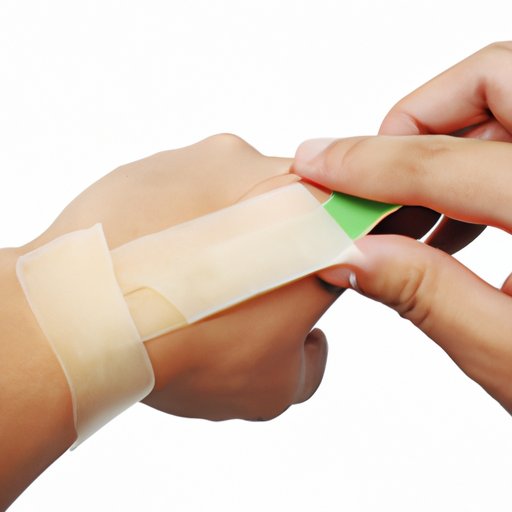
Introduction
Accidents happen, and one of the most common injuries is a cut. Whether you get a small paper cut or a deep wound, knowing how to stop bleeding is an essential skill. Not only can stopping the bleeding prevent further harm, it can also mean the difference between life and death in more severe cases. In this article, we will explore the most effective ways to stop a cut from bleeding, from basic first aid steps to more advanced techniques.
First Aid 101: Quick and Effective Tips to Stop Bleeding Cuts
When you encounter a bleeding cut, the first step is to remain calm and take basic first aid steps. First, wash your hands and put on gloves or other protection to prevent cross-contamination. Then, clean the wound with soap and water, and apply pressure using a clean cloth or bandage. Elevating the wound above heart level can also help to slow down the bleeding. Once the bleeding has stopped, apply a sterile bandage or dressing to the wound to prevent infection. Remember to wash your hands again once you’re finished.
5 Simple Steps to Stop Bleeding from Cuts and Wounds
For minor cuts, you can treat them at home using these simple steps:
- Wash your hands and clean the wound with mild soap and water.
- Apply pressure to the wound using a clean cloth or bandage until the bleeding stops.
- Raise the affected limb higher than your heart to reduce blood flow and slow down the bleeding.
- Apply a natural solution (to encourage clotting) like cayenne pepper, tea bag or honey if the bleeding won’t stop.
- If the bleeding is still uncontrollable, seek medical attention immediately.
Be Prepared: Essential Tricks for Stopping Bleeding Cuts
It’s important to keep a first aid kit at home in case of emergencies. Make sure your kit includes items such as bandages, sterile gauze, a tourniquet, and hemostatic agents. Always make sure the kit is well-stocked and in pristine condition, and know how to use all the contents. Be familiar with the location of the nearest emergency medical center, too. That way, you’ll be prepared for anything that comes your way.
The Ultimate Guide to Treating Cuts: How to Stop Bleeding Fast
If bleeding is severe or won’t stop, you may need to use more advanced techniques to stop the bleeding. Some of these techniques include:
- Wound Closure: Closing large wounds with sutures, staples or steri-strips can stop bleeding and reduce infection.
- Tourniquet: Use of a tourniquet is possible for excessive bleeding if the wound is on the arm or leg.
- Cauterization: Cauterizing a wound with silver nitrate, electrical current, or heat can help to stop the bleeding in some cases.
It is crucial to note that most of these techniques should only be attempted by medical professionals. For severe or life-threatening wounds, it’s critical to seek medical attention immediately.
From Minor to Major Cuts: Techniques to Stop Bleeding with Everyday Items
What happens when you don’t have a first aid kit on hand? Don’t worry; you can use everyday items to help stop bleeding. For instance, if you don’t have a clean cloth or bandage, try using a clean shirt or towel. Cornstarch or flour will also work since they’re natural thickening agents that encourage clotting. Black tea bags contain tannins, which are natural coagulants that slow down bleeding. However, if you’re experiencing excessive bleeding or severe symptoms, such as numbness or swelling, then seek medical attention immediately.
Conclusion
Stopping bleeding cuts is an essential skill that everyone should learn. In this article, we’ve covered everything from basic first aid steps to more advanced techniques, so you’re well-prepared to handle cuts of varying degrees. Remember to remain calm and know when to seek medical attention. With this knowledge, you’ll feel empowered and ready to handle bleeding cuts with confidence and skill.





